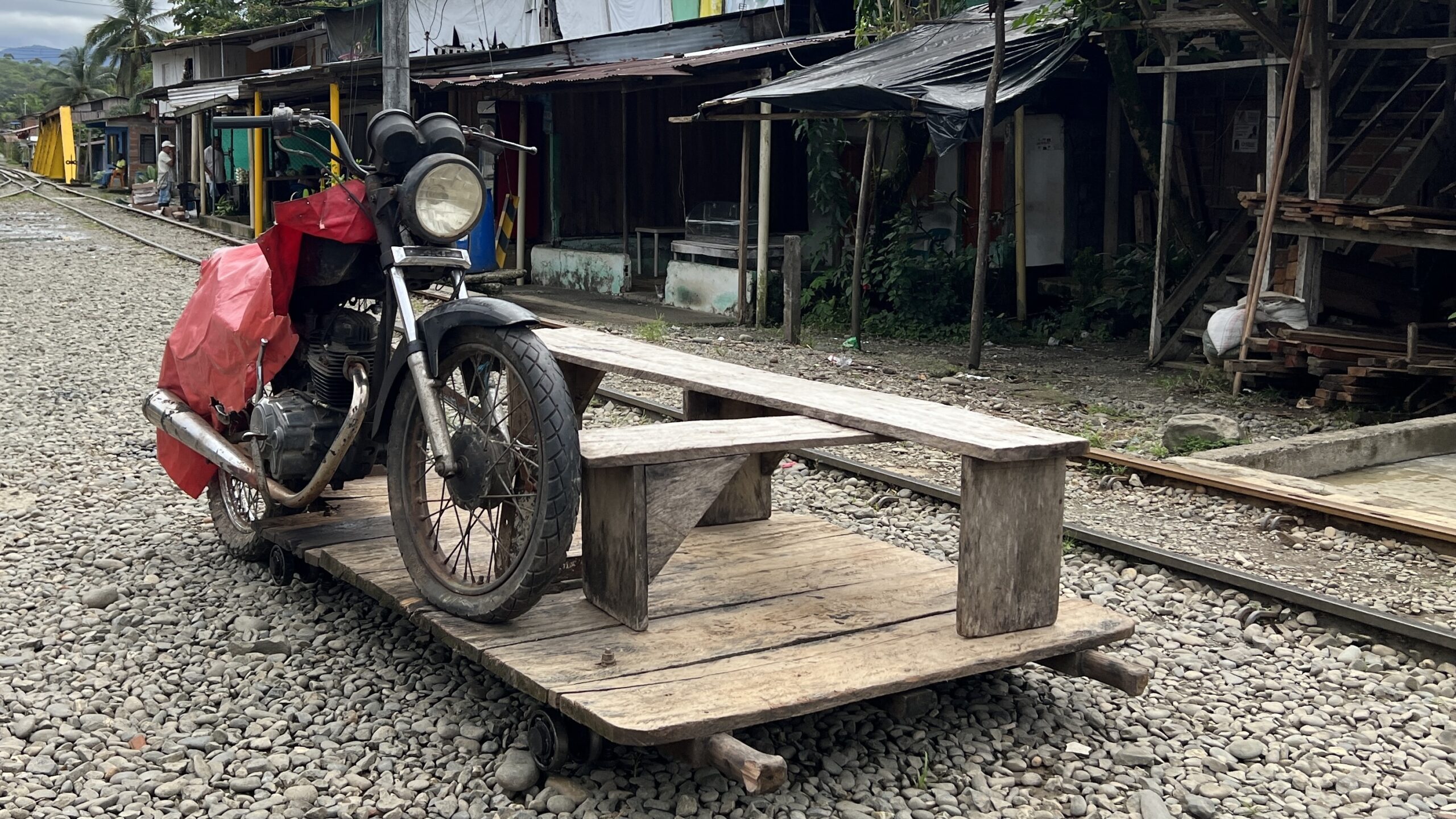

The world is full of bizarre contraptions adapted to ride on narrow-gauge railways. From the converted Ford Transit vans that roam a historic logging track in Romania to the two-headed Chrysler rail car that brought workers to a gypsum quarry in the ‘50s, we’ve seen our fair share of “trains” made out of machines that were never intended to ride the rails in the first place.
But these Colombian “brujitas,” which transport residents and tourists on a disused narrow-gauge railway deep into the rainforest, are perhaps the jankiest—and the most ingenious. During a recent trip, I climbed aboard to check out one of South America’s most primitive, yet effective, systems of public transportation.
“Brujita” means “little witch” in Spanish. It’s easy to see why these vehicles might look like witchcraft to an outsider, but they’re incredibly simple. A motorcycle sits mounted to a wooden platform, its rear tire resting on one rail track and providing forward thrust. The wooden platform contains benches for passengers and rolls along on tiny train wheels.
Think of it as a hybrid between a rail bike and a speeder, but much more cobbled together. Some now have tarp roofs to protect travelers from the oft-soaked rainforest, but as you can tell from this English-subtitled video from 2019, that wasn’t always the case.

The brujita’s simplicity has a few key advantages. First: fuel efficiency. My colleague and resident rail expert James Gilboy pointed out that there isn’t much rolling resistance between a single motorcycle tire and four greased train wheels. Even with a full load of passengers aboard, the motorcycles’ small-displacement engines move the platforms along at 20-30 mph with little strain, and their fuel tanks can be topped up with a jerry can.
Ease of repair is another plus. These craft operate along a roughly seven-kilometer route from the town of Cordoba to the 400-person village of San Cipriano, which is located inside a nature preserve. It’s a remote area that’s tough to reach, so being able to fix your mode of transport on the fly is a must. Since there’s no special train hardware to fix, road, er, railside repairs should be limited to making sure wheels are on tight and free-rolling, and basic motorcycle maintenance.
There’s only one set of tracks through most of the forest, but the brujitas’ low weight means one or two people can easily lift one and turn it around when it reaches the end of the line. Since there are no pull-offs, operators communicate by phone and walkie-talking to make sure they’re only running in one direction at once.


Riding on these things is a pretty wild experience. Our bus driver unceremoniously dropped us on the side of a four-lane highway. After darting across, we trekked a half-mile through the woods to the Cordoba station, where we purchased roundtrip tickets and boarded the humble chariot. Our brujita driver casually finished his cigarette, and we set off—across bridges, rivers, and through the jungle.
There aren’t any seatbacks, belts, or much of anything to grab onto, so I wrapped my fingers around the bench and braced against my fellow passengers. And because it’s a completely open vehicle, the jungle breeze, fresh fruit smells, and birdsong come at you from all angles. If you can forget the safety implications for a second, it’s a pleasant place to be.
According to an interview with a brujita driver, the service employed 54 drivers and operators on the weekends and 15 during the week as of 2019. The driver estimates the transportation service has helped triple the number of tourists visiting the area, bringing in jobs and conservation efforts. Not too bad for a few bright folks who strapped their motorcycles to some wood.